Disclaimer: This post contains affiliate links to handpicked partners, including tours, gear and booking sites. If you click through or buy something via one of them, I may receive a small commission. This is at no extra cost to you and allows this site to keep running.
These interesting and random facts about Sydney, Australia, uncover the fascinating history and unexpected side of the city before you visit.
Sydney is renowned for her coastal beauty, but there’s far more to this scenic city than that which makes it famous. The beautiful harbour, world-famous icons and sunny disposition are only a tiny part of the sum of Sydney’s appeal.
Uncover the fascinating, quirky and unexpected side of Sydney’s character, and learn more about her history with this guide to my favourite facts about Sydney I found during my research and my visit.
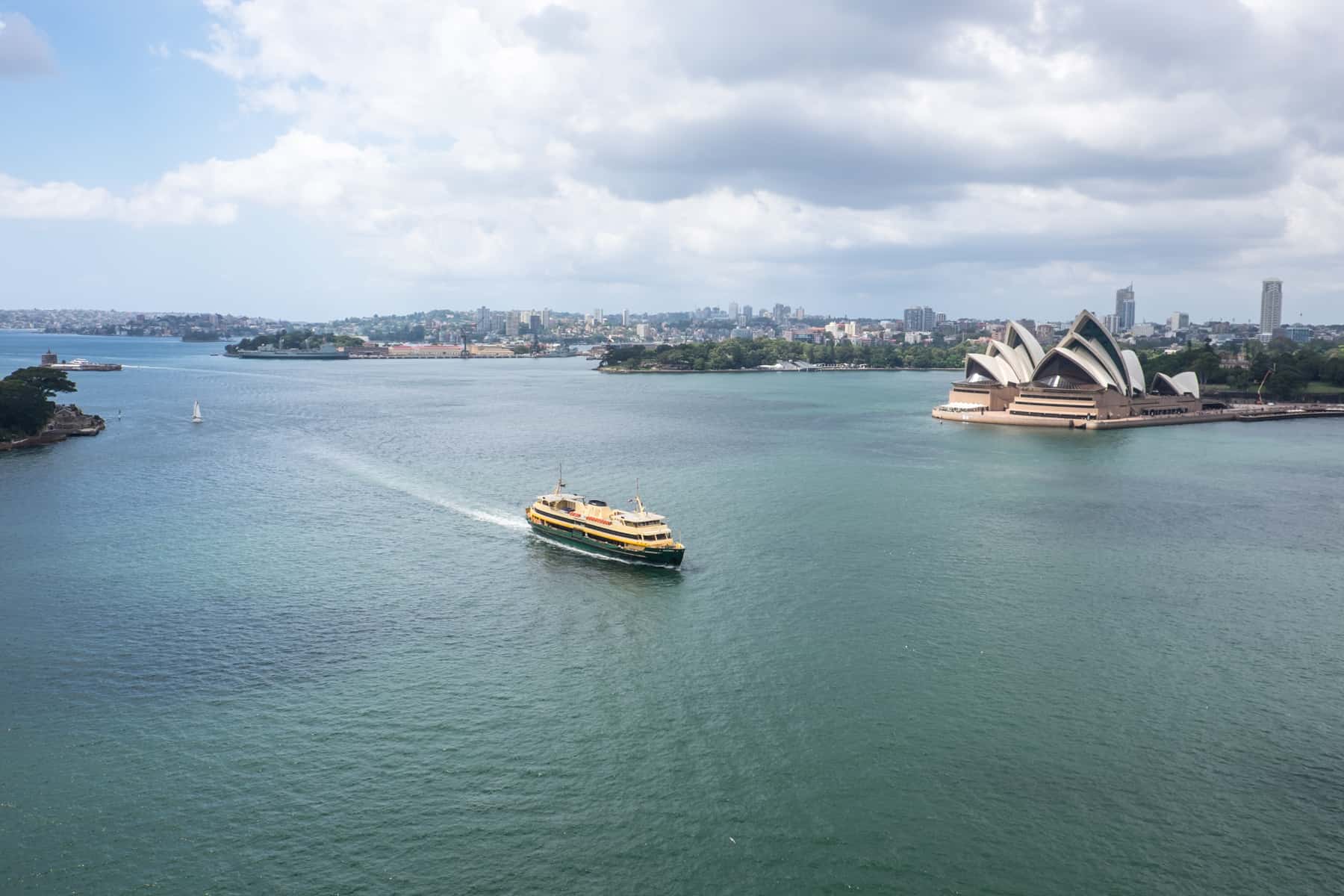
10 Interesting and Random Facts about Sydney, Australia
Contents
- Facts About Sydney to Know Before You Travel There
- Ancient and Indigenous Origins of Sydney
- What’s In a Name – Why is Sydney called Sydney?
- Sydney Harbour Bridge Nickname
- Sydney Opera House Design
- Size Matters in Australia
- Sydney is a Multicultural Hub
- Western Sydney Deserves Attention
- Convict History of Sydney
- Morbid Sydney and the Funeral Railway
- From Sydney Beaches to Underground Waterways
- Things to Do in Sydney
- Travel in Australia
Facts About Sydney to Know Before You Travel There
Ancient and Indigenous Origins of Sydney
Australia is regarded as a relatively young country on the world stage, having reached nationhood status in 1901. As far as European settlement goes, Sydney’s dates back the longest of any Australian city (closely followed by Hobart), as the First Fleet unceremoniously settled it in 1788.
However, it is essential to acknowledge the ancient origins and rights of the land. Australia is said to be the world’s oldest landmass, fittingly inhabited by the oldest surviving culture in the world, the Indigenous Aboriginal people. Radiocarbon dating suggests that Indigenous Australians have inhabited the Sydney region for at least 30,000 years.
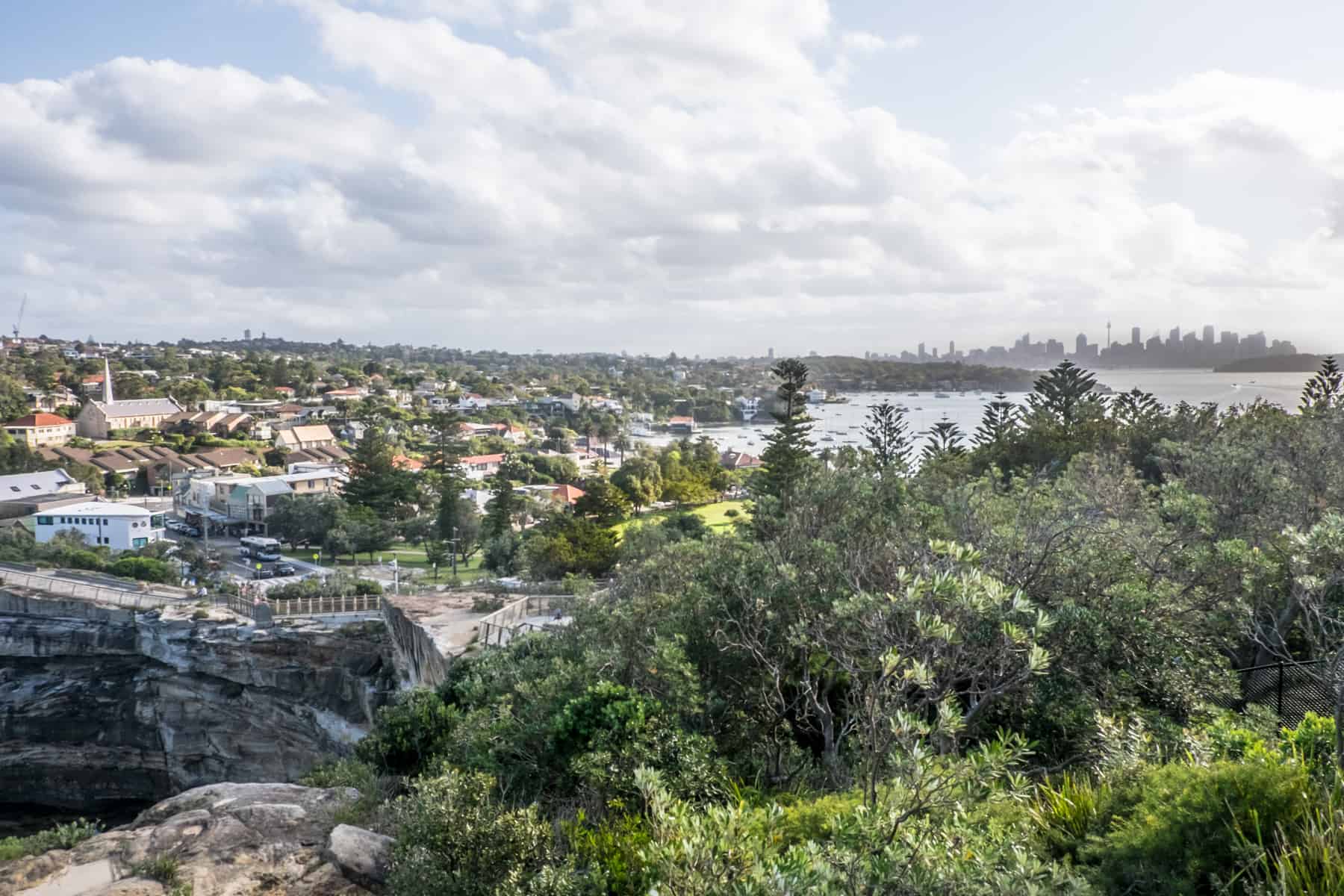
The urban landscape of Sydney beyond the business district.
What’s In a Name – Why is Sydney called Sydney?
It’s hard to imagine now, but the city was originally going to be called Albion until Sydney, after British Lord Sydney, was a more appropriate option.
However, the moniker ‘Albion’ was not forgotten. Sydney’s Albion Street, spanning from Elizabeth Street to Flinders, showcases an impressive number of historic buildings along its humble one-kilometre length. Wikipedia has a great list to plan architectural exploration in Sydney.
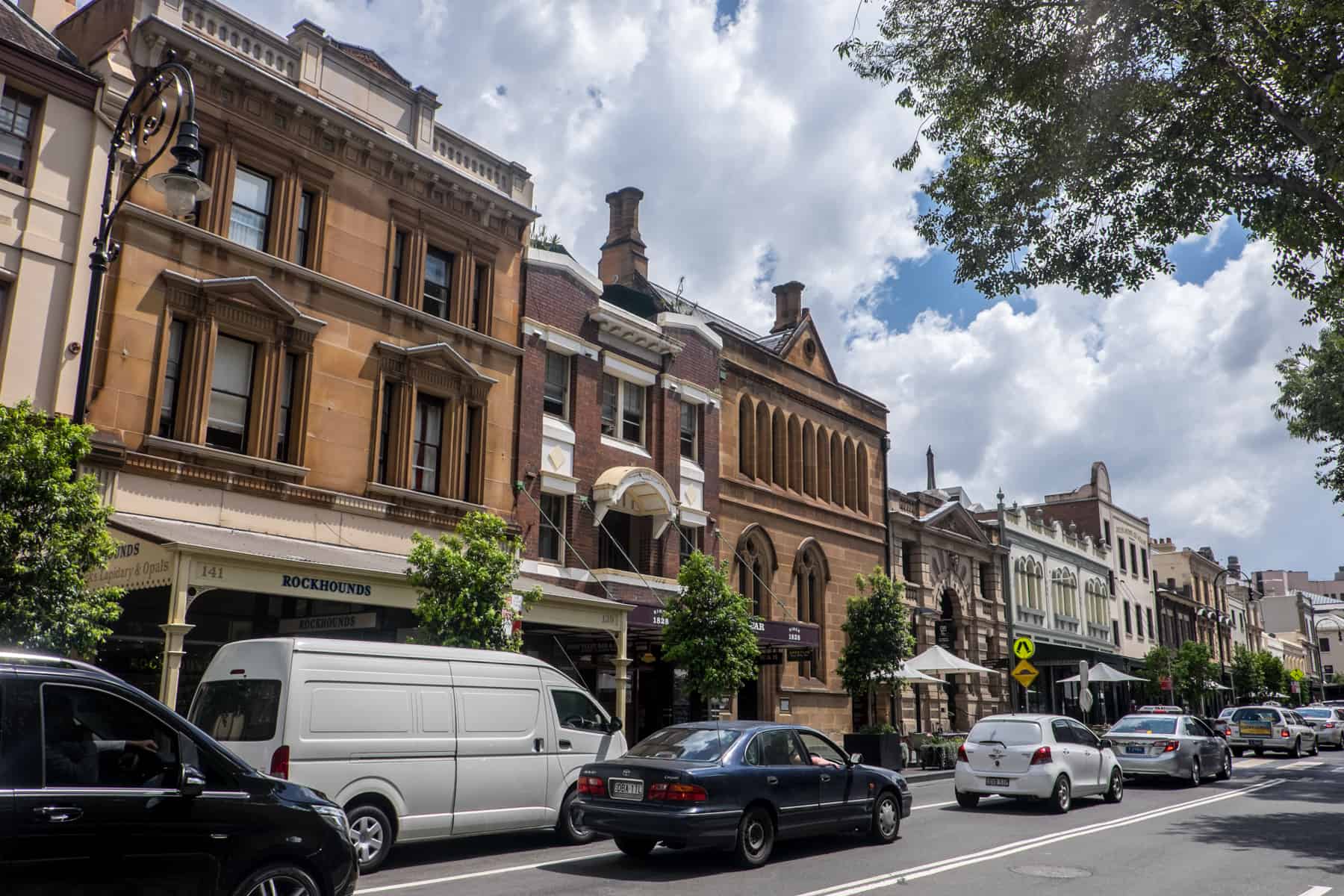
Historical brownhouse architectural buildings in Sydney.
Sydney Harbour Bridge Nickname
‘The Coat Hanger’ is the affectionate nickname for the famous Sydney Harbour Bridge landmark. Standing 134 metres above the world’s deepest natural harbour, it is the largest – but not longest – steel arch bridge you can climb. Surprisingly, the top of the arch changes its height by about 180 millimetres due to temperature changes!
It officially opened in March 1932 amid much fanfare. Sadly, up to 800 families were forced to relocate to make way for the Bridge without any compensation, and sixteen workers died during its construction.
Sydney Opera House Design
In 1973, the eponymous Harbour Bridge finally met its match with the opening of the Sydney Opera House, its design famously reminiscent of ship sails on the harbour.
While the budget blowout is well-known – it exceeded its projected budget by over fourteen times and was completed ten years behind schedule – what perhaps many people don’t realise is its sheer scale. At 185 metres long, 120 metres wide, it has roof sections weighing up to 15 tons and over a million tiles on its dazzling roof.
The famous landmark of the Sydney Opera House.
Size Matters in Australia
Sydney is Australia’s largest city, with 4.6 million people. It is also the largest economy in Australia, accounting for over a quarter of Australia’s total economic activity. Indeed, the suburb-come-satellite city of Parramatta is the country’s sixth-largest Central Business District (CBD), more prominent than some state capitals.
Sydney is a Multicultural Hub
Sydney is also one of the most multicultural cities in the world, with nearly a third of its population born overseas compared to around one-fifth of Australia overall. Over half of Sydney’s population are first or second-generation immigrants, from all corners of the globe.
The city’s western suburbs are particularly diverse. In Parramatta, for example, half the population speak a language other than English at home.
Western Sydney Deserves Attention
Sydney’s west is mostly ignored while the city centre and beautiful beaches to the north, east and south garner the most attention from tourists. The oft-neglected western suburbs are booming.
So vast is Sydney’s western component that the city’s geographic centre is, technically, the suburb of Granville – which is 22 kilometres west of the central business district.
The region is also vast demographically speaking: one in every eleven Australians resides in Sydney’s west.
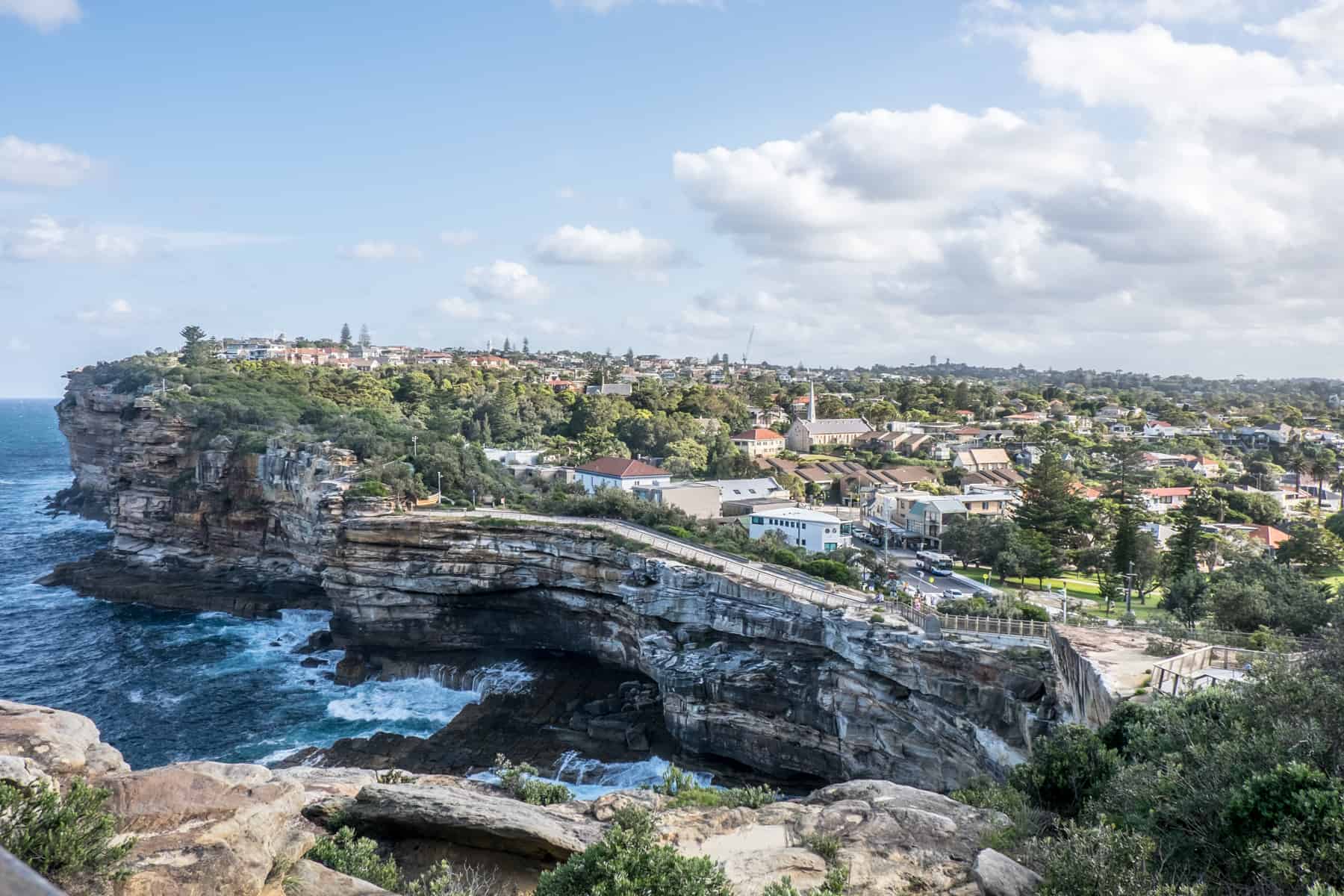
Venue to Sydney’s picturesque suburbs for a different side to the city.
Convict History of Sydney
Perhaps unsurprisingly for a city initially settled by convicts, Sydney’s inner city has witnessed many a crime and mystery. Its golden period of crime was the 1920s and 1930s when two women ruled the proverbial roost of organised crime: the infamous Tilly Devine, with an extensive network of brothels throughout Kings Cross and Darlinghurst, and her formidable rival, Kate Leigh, known as the queen of Sydney’s underworld.
However, these days Surry Hills has changed. The former site of Kate’s initial base in Surry Hills, then a slum called Frog Hollow, is today a pretty inner-city park. At the same time, the Surry Hills surroundings are a thriving business district and a trendy urban precinct of boutiques, galleries, weekend markets, quirky bars like the Absinthe Salon.
Morbid Sydney and the Funeral Railway
Like London, nineteenth-century Sydney had a ghostly railway service in operation whereby funeral trains would transport coffins and their associated mourners from the fittingly named Mortuary Station, near what is today Central Station, to Rookwood Cemetery.
This operation was in place from 1867 onwards, when the city’s cemeteries became increasingly full, requiring transportation to burial plots further afield.
From Sydney Beaches to Underground Waterways
Sydney is known for its incredible coastline and Bondi Beach fame. But there are other water-based facts about Sydney away from its ocean-hugging suburbs.
The Tank Stream is renowned as a vastly crucial freshwater source that kept the fledging colony going for a few dry years. Today, the stream is just a stormwater drain buried beneath the Sydney streetscape, explored only by the select few who are lucky enough to win the highly contested ballot to survey its course underground.
It is far from Sydney’s only underground water source, however. Australian magazine Inside History explained that beneath St James railway station lays a submerged lake of the same name. The underground lake is about a kilometre long and ten metres wide, flowing through an abandoned railway tunnel from the 1920s, with surprisingly clear waters.
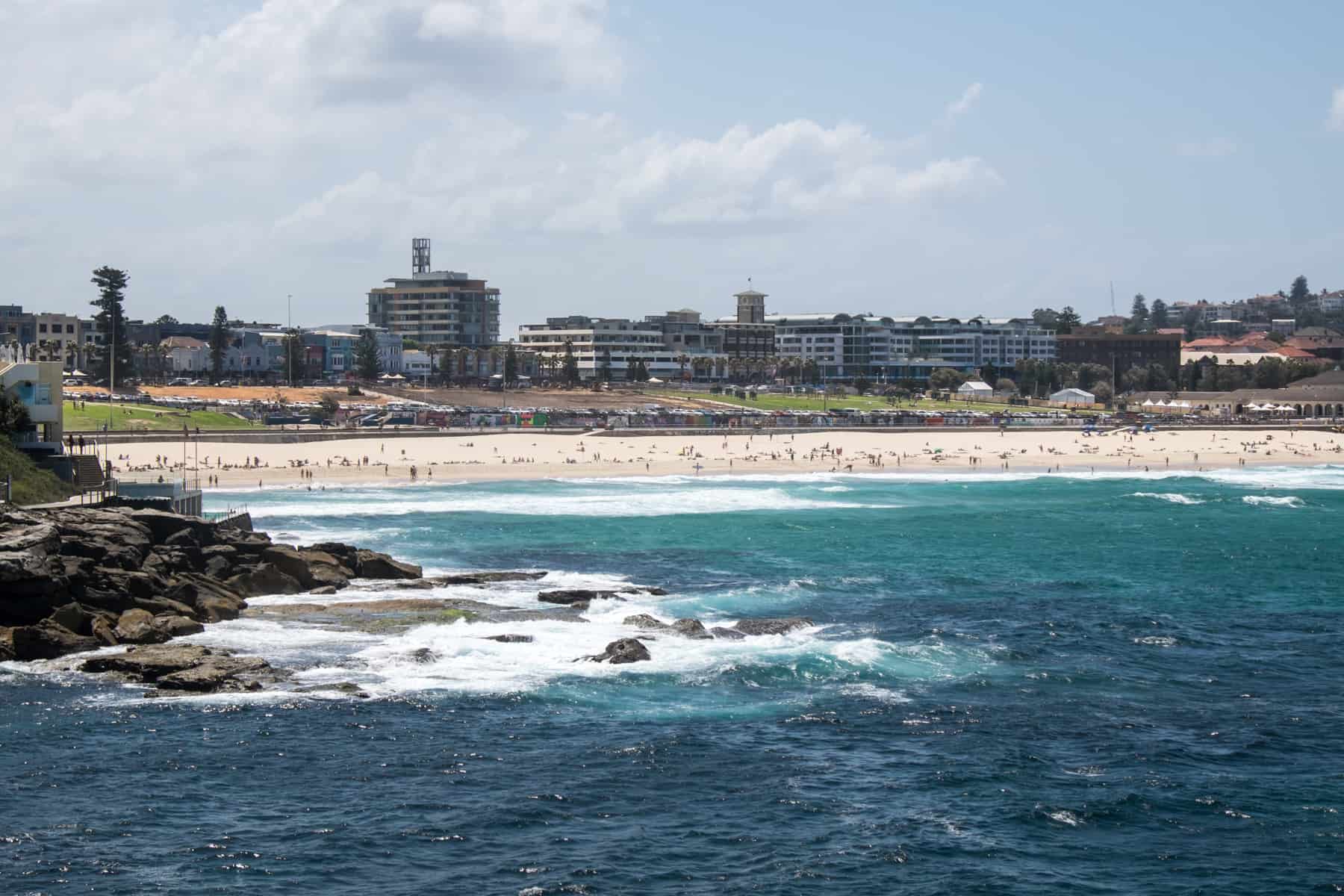
The long white-sand coastline of Bondi Beach in Sydney.
Things to Do in Sydney
Want to see more of Sydney now you know more about it? Check out these tours and trips and get to know the city better.
- On this 90-minute Sydney walking tour, delve deeper into these facts and hear more local stories.
- Don’t just see it from the outside; join a Sydney Opera House guided tour.
- Take this 4-hour Sydney bike tour and see more of the city’s iconic sights.
Travel in Australia
Is Sydney your starting point for wider Australia travel or one part of a larger adventure around the country?
From the outback and Western Australia to a road trip around Melbourne, my Australia guides have you covered.


julien says
good grief I disliked this city it felt like a giant over priced theme park, the few things that I enjoyed where things like the monorail and their going to knock it down soon what a travisity .
Sydney divides Australians most who enjoy it seem to be cashed up.